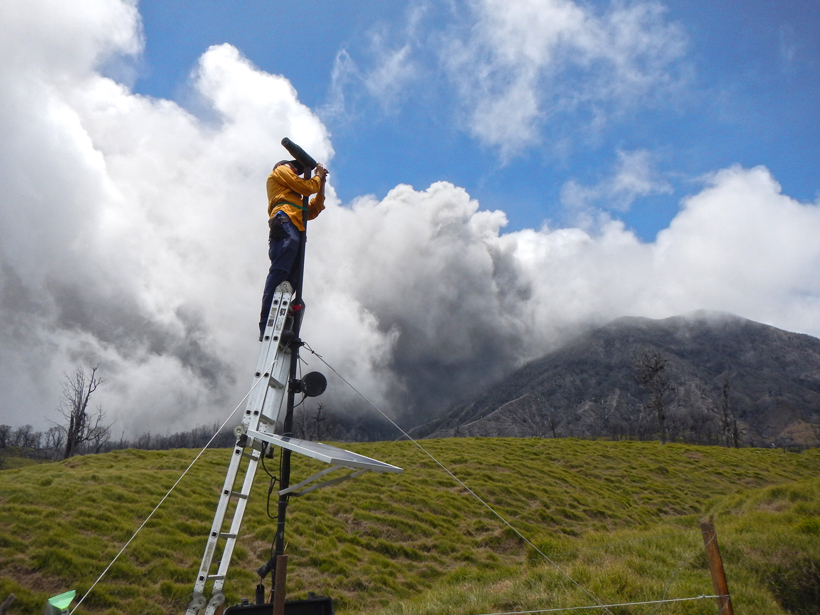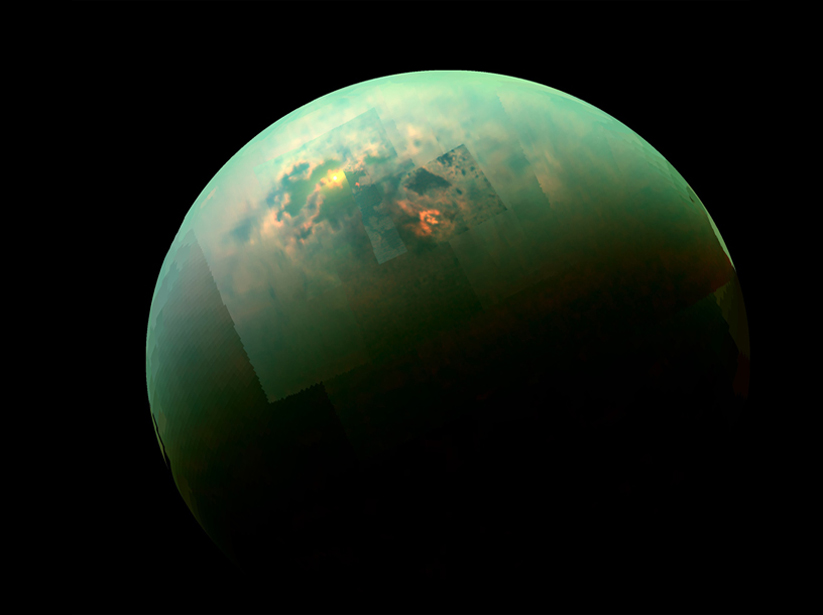A widely used technique to monitor sulfur dioxide was tweaked to focus on water vapor at Peru’s Sabancaya Volcano. Results show that the volcano steamed up prior to its 2016 eruption.
gases
Posted inScience Updates
Monitoring Gas Emissions Can Help Forecast Volcanic Eruptions
5th Meeting of the Network for Observation of Volcanic and Atmospheric Change; Turrialba Volcano, Costa Rica, 27 April to 1 May 2015
Posted inResearch Spotlights
What’s Driving Titan’s Atmosphere?
A new analysis of Cassini data reveals a major source of heavy hydrocarbons on Saturn’s moon Titan.



